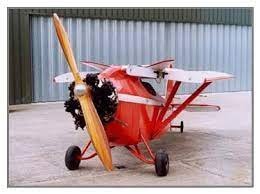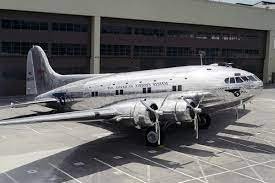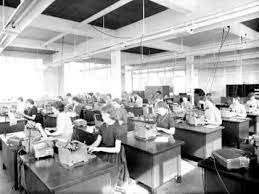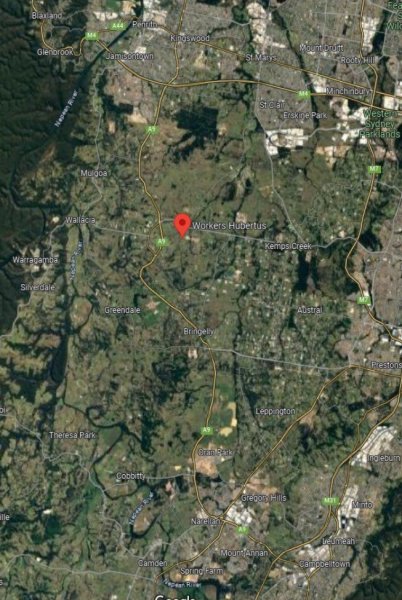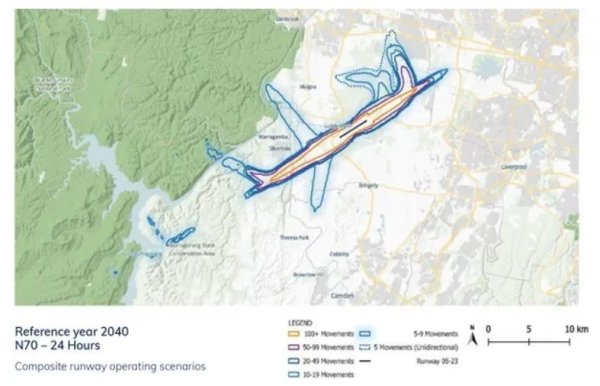-
Posts
5,297 -
Joined
-
Last visited
-
Days Won
78
Content Type
Profiles
Forums
Gallery
Downloads
Blogs
Events
Store
Aircraft
Resources
Tutorials
Articles
Classifieds
Movies
Books
Community Map
Quizzes
Videos Directory
Everything posted by old man emu
-
Congratulations!
-
Jabiru caught on camera entering Hangar 9 -3/4 at Hogwarts Airport.
-

Quite a slight on our hobby 😡
old man emu replied to danny_galaga's topic in Aircraft General Discussion
That's from the initial post. The question was referring to a comment from the bloke who cancelled his ticket for the Titanic dive that proved fatal who said, "I'm a pilot, I have my helicopter pilot's license, I wouldn't get into an experimental aircraft," You have to read the linked article for the context of that statement. Quite simply, the speaker was talking about Rush flying to an appointment in an aircraft the speaker labelled as a "experimental". Apparently Rush wanted to talk to the speaker about another aircraft, not the one he was flying. Danny has done some research and found out that the aircraft Rush was flying was a Glasair 3. Most likely that aircraft was a homebuilt kit, but although it might wear an "Experimental" label, many would argue that it is not an aircraft that is experimenting with some unique aerodynamic feature. So here we have a comment from a pilot, who flies a type of aircraft that many think of as a collection of moving parts flying in formation, dissing a class of aircraft of which he admits he has no experience. Obviously posters here have failed to read the linked article and raced off down a track towards which the original poster had not erected a pointer. Not saying that the resulting discussion had no value, but sometimes it is necessary to pluck the pearl from the oyster and place it, with a new grain of sand, in another thread to generate another pearl. -

Dual Inspection for a folding wing aircraft
old man emu replied to old man emu's topic in AUS/NZ General Discussion
That's the picture that prompted my creating this thread. I didn't want to raise the matter within the seller's thread. What also directed my line of thought was that this aircraft is VH registered, and therefore the owner must comply with the CASRs. -

Dual Inspection for a folding wing aircraft
old man emu replied to old man emu's topic in AUS/NZ General Discussion
I'm not saying that the owner of an aircraft with folding wings would not know how to do the job correctly. What I am saying is that I believe that under CASR, a dual inspection is required when anything to do with controls has been connected (or re-connected in this case). The second party to a dual inspection can be any person who is legally permitted to carry out and sign off a daily inspection on the Maintenance Release, i.e. a qualified pilot. It doesn't have to be a LAME. I doubt if RAA would have a requirement for dual inspections, but I can be corrected. -
Some VH- registered aircraft have the capability for the wings to be folded for storage. Take the Comper Swift as an example. It's a one-man job to unfold the wings and secure them for flight, but how does one comply with the requirement for a dual inspection of flight control systems when they have been separated? Does the same need for a dual inspection arise if, in folding the wings fuel lines have been separated?
-

Quite a slight on our hobby 😡
old man emu replied to danny_galaga's topic in Aircraft General Discussion
Regarding the DH Comet. The impression from the history we are give is that the Comet was the first aircraft with a pressurised cabin. While it is true that it was the first jet-powered commercial aircraft to have a pressurised cabin, the concept had been experimented with, and applied in several cases since the 1920s. The aircraft that pioneered pressurized cabin systems include: Packard-Le Père LUSAC-11, (1920, a modified French design, not actually pressurized but with an enclosed, oxygen enriched cockpit) Engineering Division USD-9A, a modified Airco DH.9A (1921 – the first aircraft to fly with the addition of a pressurized cockpit module)[43] Junkers Ju 49 (1931 – a German experimental aircraft purpose-built to test the concept of cabin pressurization) Farman F.1000 (1932 – a French record breaking pressurized cockpit, experimental aircraft) Chizhevski BOK-1 (1936 – a Russian experimental aircraft) Lockheed XC-35 (1937 – an American pressurized aircraft. Rather than a pressure capsule enclosing the cockpit, the monocoque fuselage skin was the pressure vessel.) Renard R.35 (1938 – the first pressurized piston airliner) Boeing 307 Stratoliner (1938 – the first pressurized airliner to enter commercial service) Lockheed Constellation (1943 – the first pressurized airliner in wide service) Avro Tudor (1946 – first British pressurized airliner) de Havilland Comet (British, Comet 1 1949 – the first jetliner, Comet 4 1958 – resolving the Comet 1 problems). Those are commercial aircraft, but there were several military aircraft with pressurised cockpit/cabins. A prime example is the B-29 Superfortress (think Enola Gay). One would have thought that the fatigue problem would have been sorted well before the Comet was designed. Note the rectangular windows on the Boeing Stratoliner -
That, of course, would be true for those who could do it, but remember there are more pilot's licences and/or certificates than there are aircraft in the country. The majority of those wishing to be the PIC have to beg, borrow or rent. I doubt that anyone here would accept that the aircraft we use should be safe to use, and the others who share the air with us are competent to be there. This topic isn't really about those things. It is not even about the system that is in place to ensure both those things. It is about the pricing of services that seem to be set more under the influence of the ideas of commercial concerns for profit than simply meeting what really are acceptable standards. Standards that the users themselves see as the ways and means to meet the goal of safe participation in an activity. We don't run a modern organisation with Bob Cratchit's workstation or typing pools and store data in a compactus Why then must an organisation charge such great amounts when all these things have been replaced by a workstation with a computer accessing a data storage device?
-
Do you pay as much attention to your car's engine as you do to your aircraft's engine? Because pilots know that when the engine stops Life gets testing. Provided the manufacturer is strict with quality control of everything from the raw materials, through casting and machining, to component assembly a modern ICE with regular attention is hardly likely to have a failure over a long service life. I'll add the rider to that statement by saying anything is possible, but modern metallurgy and manufacturing standards have reduced to probability of a failure to almost insignificant levels, despite how hard the engine is pushed. Do you really think that manufacturers are telling you the absolute truth when they tell you that their engine produces maximum horsepower at a certain RPM? Just look at WW2 military aero engines, especially for fighters. Pilots were told that maximum power that could be used for takeoff was such and such RPM. But if the need came to get the F out of danger, just crash the gate to get combat power for a maximum of 5 minutes for most engines. Then when you get home, tell your crew chief that he needs to do an engine swap. Like car engines, aero engines are built for reliability. The aviation workhorse, the Lycoming IO-360, only has a compression ratio of 8.5:1, which is low enough to enable it to use 91/95 avgas. Power is quoted at 180 HP at 2700 RPM. But the POH says . Normal cruise is 65-75% power, 2200-2700 RPM (no more than 75%)with 65% as the conservative setting. Operating the engine like that wouldn't raise a sweat in a sauna.
-
One of my professors once told me that a little bit of data, no matter how doubtful, is better than no data at all.
-
Before the hoary old chestnut of Jabiru engines comes into this - and I think you should not have excluded them - have all those problems in the early engines been resolved in the newer engines?
-
When did this MARAP come in? Was it after RAA became a SAAO? I ask because I can remember replacing props on Jabirus that had become damaged by raindrop strikes and other normal things that wreck wooden props. Methinks you have identified the problem. If I recall, there wasn't a groundswell of activity amongst the members when there was the major change to the the organisation's structure a few years ago.
-

Giant Curtiss JN Jenny Biplane and Blériot XI Monoplane
old man emu replied to dominicm's topic in Remote Control
What is the most important thing about the Bleriot X1 that excited sfGnome so that it became his pin-up? At eight years of age, I doubt if it was the intimate details of the construction and power plant. I bet, that to him, it was simply a thing of beauty. Henri did not have the materials and the engines that have been developed since his day. The airframe was a box-girder fuselage built from ash with wire cross bracing. What would be wrong with replacing the wood with aluminium tubing? One could always paint the aluminium the colour of ash for a bit of simulation. As for the engine, why revert to one of a primitive level of metallurgy? Since the idea is to be able to get the thing into the air and experience what those early aviators did, what is wrong with using a small engine of modern design? It wouldn't look the same as a 3 cyl Anzani, but once in the air, who could tell? As for the undercarriage, Bleriot had the wheels mounted in castering trailing arms which could slide up and down steel tubes, the movement being sprung by bungee cords. This simple and ingenious design allowed crosswind landings with less risk of damage. A sprung tailwheel was fitted to the rear fuselage in front of the tailplane, with a similar castering arrangement. Nothing much changed in the materials for that setup. The hardware to join the bits together hasn't changed much. A bolt is still a bolt. A hinge is still a hinge, as time goes by. You could cover what needs to be covered with Dacron, which is likely to be lighter that the linen he probably used. Strewth! you might knock so much weight off by using modern materials that it could be Part 103 -
Clearly the major problem with ALL heat engines is that of dissipating the heat. Wear/sealing problems are the product of failing to adequately solve the heat dissipation problem. The ways that have been tried to deal with this in ICEs have been: moving the cylinders through the air (rotary engine); moving air over stationary cylinders (radial and boxer engines), and thermal transfer using a liquid ("water" cooled). In each case, weight has to be added to the basic 'cylinder attached to a box containing a shaft' design. We know from thermodynamics that a 14.7:1 air/fuel mixture will produce a known amount of heat. The amount of heat is dependent on the quantities of fuel and air that are burnt - using a large diameter cylinder will provide more heat than a smaller diameter one (all other things being equal). What gets me thinking about heat dissipation in an engine where opposing pistons move towards each other to create a "combustion chamber" is 'how do you get rid of the heat produced in a space buried in the middle of the mass of the engine?'.
-
Everything old is new again! The idea of cylinders being arranged around the crankshaft, with the pistons moving away from the crankshaft, is a design that has dominated automotive, aero and stationary engine design for a century and a half. It has led us to believe that such is the only way to produce reciprocating motion. We are well acquainted with the typical system whereby the piston is connected to the crankshaft by a rod. That connection can be direct as we normally see: or it can be done with a slotted rod called a Scotch Yoke. Watch the first bit of this video to see how the system works. The op engine seems to use something similar to the design of the machine on the left end of the second row in the picture. The operation of that system is shown at the end of the video.
-
Well said, that man! I said that I thought the report in the Media would be another sensationalist beat-up. Just wait until the penny drops with these scaremongers. The next series of headlines will drag out that hoary old chestnut of a verb, "plummet", as they start to describe house prices to the north of the airport. And we all know that property prices to a Sydneysider are as footy is to a Melbournian.
-
It is an annoyance that those diagrams don't come with a scale. It seems to me that the Media has once again made a mountain out of a molehill regarding these noisy aeroplanes. I haven't seen anything about the climb/descent gradients of the aircraft associated with the airport, and how far from the airport a 2000 ft lower limit would intersect with the gradients. While it is true that the predominant wind is the WSW, and is why the runway alignment is 05/23, you have to consider the summer afternoon nor'easter from about 3:00 pm, which would suggest the use of the 05 runway. But would the velocity of that wind, which is not really a roaring gale, prevent heavy aircraft from conducting downwind landings and takeoffs on Rwy 23? As a pilot flying at night, would you rather approach a runway flying towards the dark with the bright lights of the city behind you, of from the dark towards the lights?
-
That's true, but what does the student learn during that transit flight? Let's say that it's 20 Nm from Bankstown to the training area. At 100 kts, that's 12 minutes out and 12 minutes back. 24 minutes in transit, plus let's say 6 minutes for take off and landing at Bankstown. That's half of the usual one hour lesson time. I'll admit that the student would be practising straying & level and course holding, as well as discussing the proposed training exercise and debriefing during that time. You also have to take into account the fact that most early flight training is done in the circuit as during one's early learning, landing in the various wind conditions is something to be focussed on.
-

Giant Curtiss JN Jenny Biplane and Blériot XI Monoplane
old man emu replied to dominicm's topic in Remote Control
You won't be able to do it under Part 103 because the Bleriot XI had an Empty weight of 230 kg (507 lb) and would a wing loading of 3.38 lbs/sq ft meet Part 10 requirements? -
Nancy Bird Walton Airport is located near Luddenham, near the A9 sign. Due to the massive amount of residential development to the east of the A9 from Luddenham to Narellan, training is not possible east of the A9. In the past the airspace over the current site of the airport was the main training area used by schools from both Bankstown and Hoxton Park. The area was agricultural land and provided many locations for simulating precautionary search and forced landing practice. Currently, the most residentially unoccupied space in the southwest is within this area: This is too far to be economically viable for training operations out of Bankstown. It is 20 Nm from Bankstown to the area between Orangeville and Camden.
-
Today that released the noise patterns expected from operations at Nancy Bird Walton Airport. The diagram gives a fair indication of airspace restrictions associated with it. It would seem likely that the airspace available for training will be restricted to that area bounded by a line Camden to Theresa Park, then southwest from Theresa Park, parallel to the 05 runway of the international airport. So long, Bankstown as a training airport.
-

More FAA Part 103 Saga…..
old man emu replied to jackc's topic in U.S.A. FAA FAR Part 103 and Basic Flying Machines's Topics
So we have, but jackc is referring to the pilot of a single-seater becoming a lawn dart without injury to any other person.





